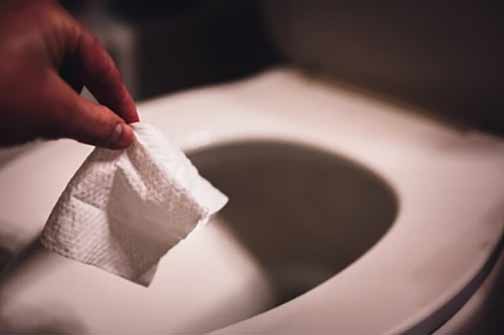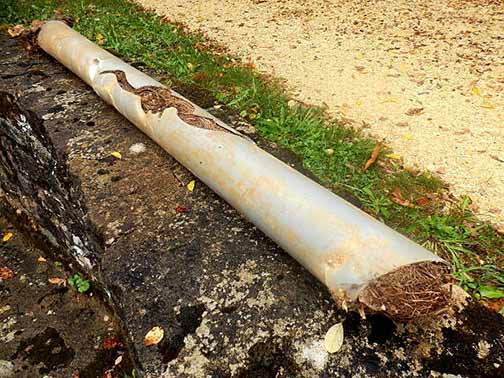Understanding the Importance of a Healthy Sewer Line
A sewer line is a critical component of any residential or commercial property, responsible for carrying waste away from the building to the main sewer system. Despite its importance, it often goes unnoticed until a problem arises. A malfunctioning sewer line can lead to significant inconveniences, health hazards, and costly repairs. Understanding the importance of maintaining a healthy sewer line is the first step in preventing potential disasters.
The sewer line serves as the backbone of a property’s plumbing system, ensuring that waste is efficiently and safely transported away from the premises. Without it, the risk of contamination and health hazards increases significantly. The degradation of a sewer line can lead to environmental pollution, attracting pests and causing foul odors that can disrupt the quality of life for inhabitants. Therefore, maintaining a robust and functional sewer line is not just a matter of convenience but a necessity for health and safety.
Signs Your Sewer Line Might Be in Trouble
Identifying the signs of a troubled sewer line early can save you time, money, and stress. Some common indicators include slow drainage, unpleasant odors, gurgling sounds from drains, and water backups. If you notice any of these signs, it is crucial to address them immediately to prevent further damage.
Slow drainage in sinks, bathtubs, or toilets is often one of the first signs of a sewer line issue. This can indicate a blockage that needs to be cleared before it leads to more severe problems. Unpleasant odors emanating from drains or around the property may suggest a break or leak in the sewer line, allowing waste to escape. Gurgling sounds are often caused by trapped air in the plumbing system, indicating a potential blockage or misalignment. Water backups, especially in lower levels of the property, are a clear sign of a serious issue that requires immediate attention.
The Impact of Tree Roots on Sewer Lines
Tree roots are a common cause of sewer line damage. As trees grow, their roots naturally seek out sources of water, making sewer lines an attractive target. Once roots infiltrate the pipes, they can cause blockages, cracks, and even complete pipe collapses. Regular inspections and maintenance can help prevent tree root intrusion and protect your sewer line.
Tree roots can be particularly aggressive, penetrating pipes through small cracks or joints. Once inside, they expand, causing significant damage and obstructing the flow of waste. This not only leads to blockages but can also result in the complete collapse of the sewer line if not addressed promptly. Homeowners should be aware of the types of trees planted near sewer lines and consider root barriers or other preventive measures to mitigate this risk.
Age and Deterioration: The Silent Threat
Like any other infrastructure, sewer lines have a lifespan. Older pipes, especially those made from materials like clay or cast iron, are more susceptible to deterioration and damage. Over time, these materials can corrode, crack, or collapse, leading to significant issues. Regular inspections can help identify aging pipes and address them before they fail.
The deterioration of sewer lines is often a gradual process, making it a silent threat that can go unnoticed until a major failure occurs. As pipes age, they become more brittle and vulnerable to environmental factors such as ground movement or temperature changes. Regular maintenance and inspections are crucial for identifying potential weaknesses in the system, allowing for timely sewer line repairs or replacements before a catastrophic failure occurs.
The Role of Environmental Factors
Environmental factors such as ground movement, temperature changes, and heavy rainfall can all impact the integrity of sewer lines. Ground movement can cause pipes to shift, leading to misalignments and potential breaks. Temperature fluctuations can cause pipes to expand and contract, resulting in cracks. Heavy rainfall can overwhelm the sewer system, leading to sewage backups and overflows. Understanding these environmental impacts can help in planning preventive measures.
Ground movement, whether due to natural settling or seismic activity, can cause significant stress on sewer lines, leading to misalignments and potential breaks. Temperature fluctuations, especially in regions with extreme weather conditions, can cause pipes to expand and contract, resulting in cracks and leaks. Heavy rainfall can overwhelm sewer systems, particularly in older infrastructure, leading to backups and overflows that can cause extensive property damage.

Human Activities and Their Consequences
Human activities, such as improper disposal of waste and construction work, can also contribute to sewer line problems. Flushing non-biodegradable items, grease, and other inappropriate materials can lead to blockages. Construction activities can inadvertently damage sewer lines, especially if they are not properly marked. Educating property owners and workers about proper waste disposal and the importance of locating sewer lines before construction can mitigate these risks.
Improper waste disposal is a common cause of sewer line blockages. Items such as wipes, sanitary products, and grease can accumulate in pipes, causing significant obstructions. Construction activities, particularly those involving heavy machinery, can inadvertently damage sewer lines if they are not properly identified and marked. Educating property owners and construction workers about the importance of proper waste disposal and sewer line identification is crucial for preventing these issues.
Preventive Measures and Maintenance Strategies
Regular maintenance is key to ensuring the longevity and efficiency of your sewer line. Scheduling routine camera inspections inside your sewer lines and cleanings can help identify potential issues before they become major problems. Using root barriers and planting trees away from sewer lines can prevent root intrusion. Additionally, educating property occupants about proper waste disposal can reduce the risk of blockages.
Preventive measures such as regular inspections and cleanings can help identify potential issues before they become major problems. Root barriers can be installed to prevent tree roots from infiltrating sewer lines, while strategic landscaping can help avoid planting trees with aggressive root systems near sewer infrastructure. Educating property occupants about proper waste disposal, such as avoiding flushing non-biodegradable items or pouring grease down drains, can significantly reduce the risk of blockages and other issues.
The Cost of Ignoring Sewer Line Problems
Ignoring sewer line issues can lead to severe consequences, including property damage, health hazards, and costly repairs. Water damage from sewer backups can ruin flooring, walls, and personal belongings. Exposure to sewage can pose serious health risks to occupants. Moreover, the cost of emergency repairs is often significantly higher than the cost of regular maintenance. Addressing sewer line problems promptly can save you from these potential costs and headaches.
The financial implications of ignoring sewer line problems can be significant. Water damage from sewer backups can ruin flooring, walls, and personal belongings, leading to costly repairs and replacements. Exposure to sewage can pose serious health risks to occupants, potentially leading to medical expenses. Moreover, the cost of emergency repairs is often significantly higher than the cost of regular maintenance, making it financially prudent to address issues promptly.
When to Call a Professional
While some minor sewer line issues can be resolved with DIY methods, it is important to know when to call a professional. Persistent problems, such as recurring backups, slow drains, and foul odors, often require the expertise of a licensed plumber. Professionals have the tools and knowledge to accurately diagnose and fix complex sewer line issues, ensuring the safety and functionality of your plumbing system.
Knowing when to call a professional is crucial for maintaining a healthy sewer line. While some minor issues can be addressed with DIY methods, persistent problems such as recurring backups, slow drains, and foul odors often require the expertise of a licensed plumber. Professionals have the tools and knowledge to accurately diagnose and fix complex sewer line issues, ensuring the safety and functionality of your plumbing system. Attempting to fix these issues without professional help can lead to further damage and increased repair costs.
Conclusion: Proactive Care for Peace of Mind
Maintaining a healthy sewer line is essential for the safety, comfort, and value of your property. By understanding the common causes of sewer line problems and taking proactive measures, you can prevent costly repairs and ensure the longevity of your plumbing system. Regular inspections, proper waste disposal, and timely professional intervention are key to keeping your sewer line in optimal condition. By addressing issues early, you can enjoy peace of mind and avoid the chaos of unexpected plumbing emergencies.
Proactive care for your sewer line not only ensures the safety and comfort of your property but also enhances its value. By understanding the common causes of sewer line problems and taking proactive measures, you can prevent costly repairs and ensure the longevity of your plumbing system. Regular inspections, proper waste disposal, and timely professional intervention are key to keeping your sewer line in optimal condition. By addressing issues early, you can enjoy peace of mind and avoid the chaos of unexpected plumbing emergencies.


